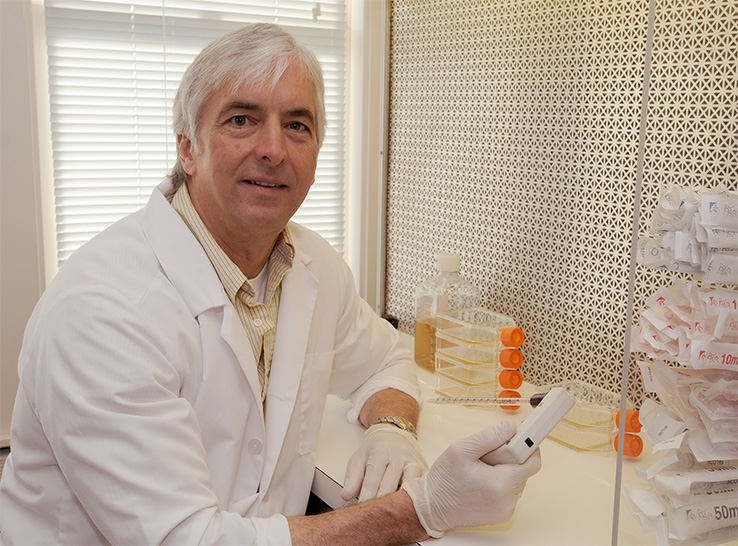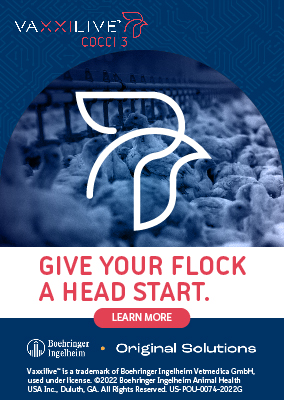Avian metapneumovirus (aMPV), which can cause respiratory and reproductive disease in chickens and turkeys, has posed increased problems for US poultry producers in recent years. It can affect both broiler and layer houses, with drops in egg production and reduced performance due to the ill health of birds.
The emergence of aMPV subtypes A and B in the field has left producers seeking new tools to reduce the economic impact of aMPV. This has prompted the USDA to step in, granting approval for vaccines that are fully tested and licensed in other parts of the world.
In an interview, Silke Rautenschlein, PhD, professor at the University of Veterinary Medicine in Hannover, Germany, covers the past, present and future of the virus and its control.
Can you briefly explain the history of aMPV, both globally and in the United States?
SR: After it was first described in South Africa in the late 1970s, it appeared in various parts of the world through the 1980s. The US was free from all subtypes for several years, but in 1996 subtype C emerged there. And then at the end of 2023 and in 2024, subtypes A and B also appeared. Recent scientific publications suggest one subtype (B) likely arrived with wild birds, maybe from Eastern Asia, while the other subtype (A) has possibly come from Mexico.
What are the genetic similarities and differences between the subtypes, and what does that mean for protecting birds from disease?
SR: The differences are often seen during molecular analysis of the virus proteins. For example, the G protein is diverse, and a lot of differences relate to changes in this area. There is cross-protection between subtypes A and B, whereas, due to genetic variation, less protection is provided by subtype C against challenge with subtypes A and B.
Is this lack of cross-protection the reason for the problems we’re seeing in the U.S.?
SR: Yes. Now that subtypes A and B are in the US, it has become an issue. There weren’t any vaccines available because there were protection measures in place for type C, and producers may have had some pre-existing immunity in their birds, certainly in the wild populations. With the arrival of A and B, new vaccines were needed to achieve better protection.
Are there any biosecurity issues compounding the problem?
SR: Biosecurity is a potential factor in any country; it’s not unique to the US. But I would consider the differences between countries. For example, in Germany, we have an ‘all-in all-out’ approach between placements, where old litter is removed, and this results in good litter and air quality at the beginning of the production cycle.
In the US, there are greater challenges with the buildup of litter, with suspected higher ammonia levels, dust particles and microbial load. All these factors probably have a synergistic effect on the risk of infections with pathogens, because they pose a bigger challenge for the respiratory tract.
You mention the significance of secondary pathogens. Can you explain more about their effects?
SR: When the new subtypes appeared, there was no pre-existing immunity, and aMPV infections took place and impacted the birds’ local defense against secondary pathogens. The major problem is that secondary infections exacerbate the clinical picture. The pathogen itself leads to the destruction of mucociliary clearance in the respiratory tract, allowing secondary pathogens to attach much more easily. Escherichia coli is particularly common, and problematic.
The reason for the high mortality rates and economic losses is not aMPV as a primary pathogen, but because it opens the door for other pathogens to invade. Then major problems appear.
Are there differences in the way aMPV affects different birds?
SR: What we noticed experimentally, at least in our lab, is that turkeys seemed to be more susceptible. If both chickens and turkeys are susceptible to the same strain, then in comparative studies, turkeys show faster and higher levels of virus replication. I think this is due to differences in how their immune response develops.
To my knowledge, there’s no extensive data looking at different chicken breeds. However, if you were to investigate this more closely, using brown layers and white layers as examples, they have different genetic traits and variations in their immune reactions, so I would expect to see a difference. What I have also found interesting in my own work is that male chickens seemed to be more susceptible than females. This may lead to slight variations in the clinical picture.
One of your research areas focuses on immunosuppression and aMPV infections. How is that playing out in the field?
SR: Immunosuppressive pathogens create opportunities for many pathogens, not simply for aMPV. If birds are pre-infected with an immunosuppressive pathogen, local immunity is compromised. If the infection is infectious bursal disease virus, for example, you have fewer immunoglobulins on the mucosal surfaces.
We have thorough vaccination strategies against the important immunosuppressive pathogens in chickens such as Marek’s and Gumboro (infectious bursal disease), but there is less attention on chicken anemia virus. This also has a compromising effect, especially on T cell immunity, which is an important immune system branch for controlling aMPV. All three of these viruses circulate in the field, so field pressure is there.
Is there anything producers could do in terms of management that would help deal with the problem of immunosuppression and aMPV?
SR: With immunosuppression, a thorough vaccination strategy would help. And under the field circumstances, it’s always good to really know your enemies. Where there are flocks and regions that have problems, investigate which pathogens are circulating and when, and what type of aMPV appears there, so your vaccination strategy can be optimized.
If vaccines against aMPV are available and you have high virus pressure in your region, you should consider vaccinating. Additionally, I think it’s always good to evaluate barn climate throughout the growing cycle — look at air quality and dust levels. Reducing these non-infectious challenges helps birds maintain stronger respiratory defenses. These are things that producers really can influence.
Diagnosis of aMPV using PCR testing is known for being difficult. Why is that?
SR: The problem is the virus only lingers for a short time, so as soon as you see clinical disease, immune responses are induced, and the virus goes down. That means samples are often taken too late in the field. When the secondary infections come in, you often don’t have a chance to detect the virus anymore.
The second problem is that the virus is not very stable, so you cannot store the field samples for a long time. Even if a sample was initially positive, by the time it reaches the diagnostic facility, the virus may be undetectable.
What are your key takeaways for producers facing aMPV challenges?
SR: Looking at the problems producers have faced in the US, I would recommend taking a holistic approach to fight the disease. This means not just focusing on aMPV, but aMPV in combination with other parameters. By themselves, they may not have a major impact on the birds’ health, but the combination really exacerbates the situation in the field.
Look at flock management, hygiene and air and bedding quality. Even in well-run operations, there’s often room for improvement. If vaccines are available, use them strategically — not just to eliminate the virus, but to stabilize the overall respiratory health of the flock.
Editor’s note: Content on Modern Poultry’s Industry Insights pages is provided and/or commissioned by our sponsors, who assume full responsibility for its accuracy and compliance.









